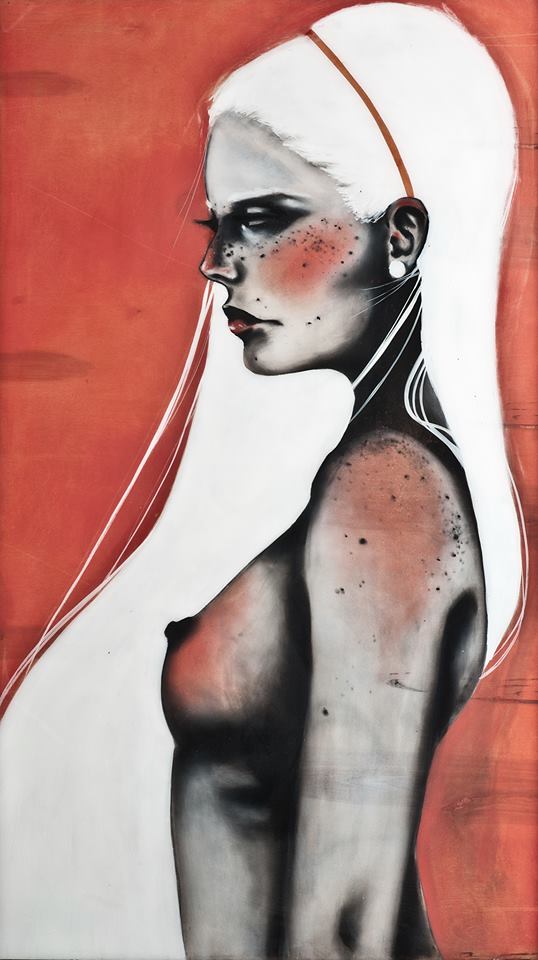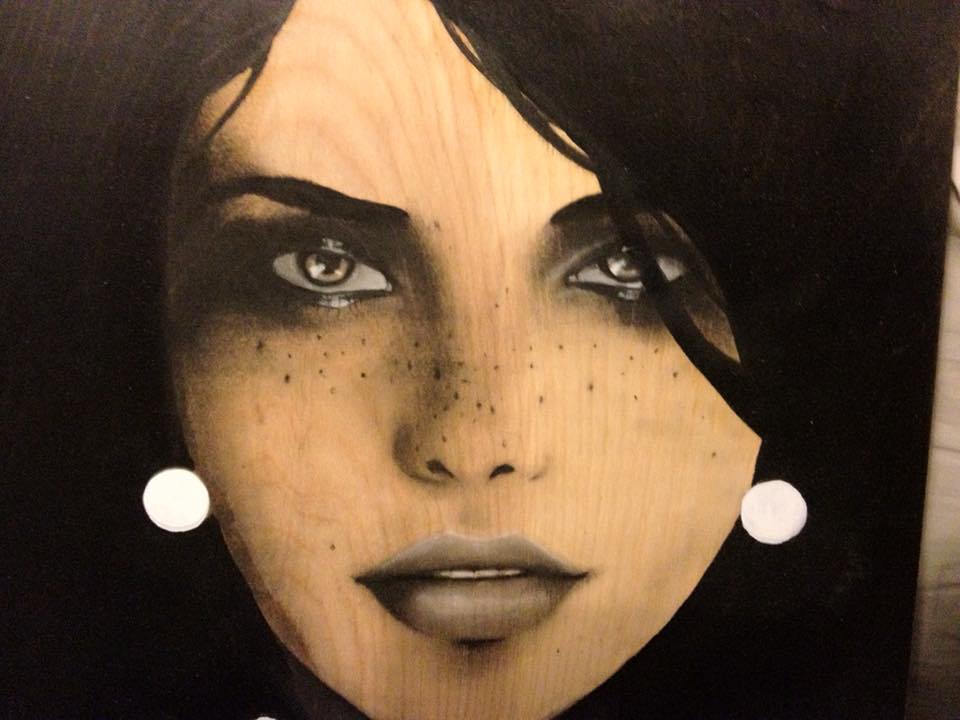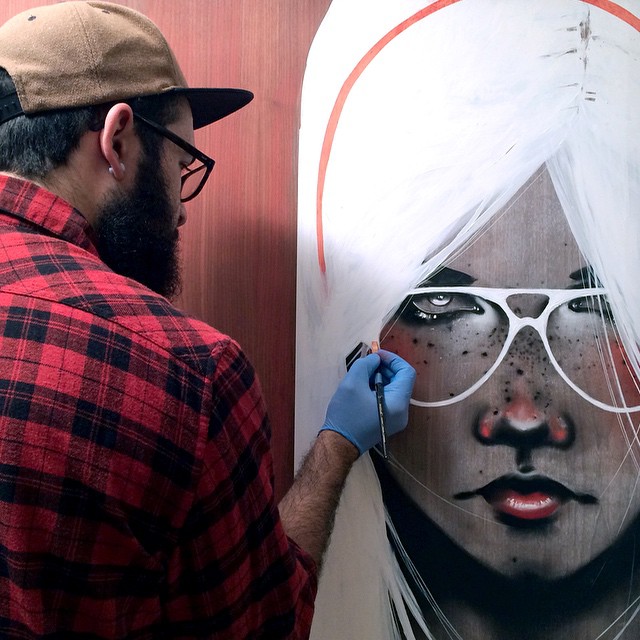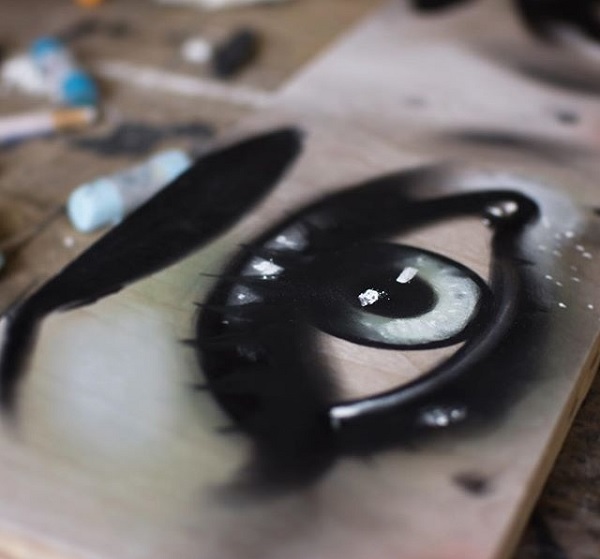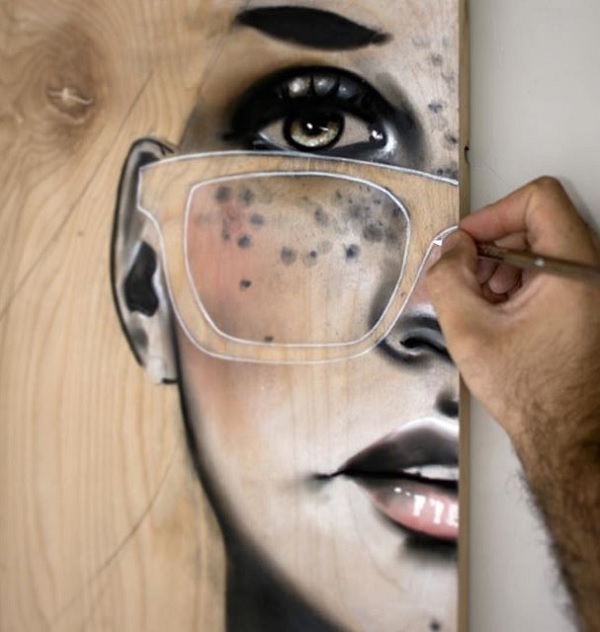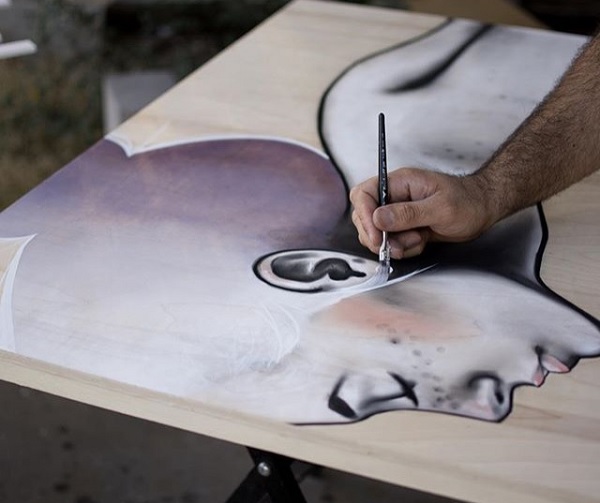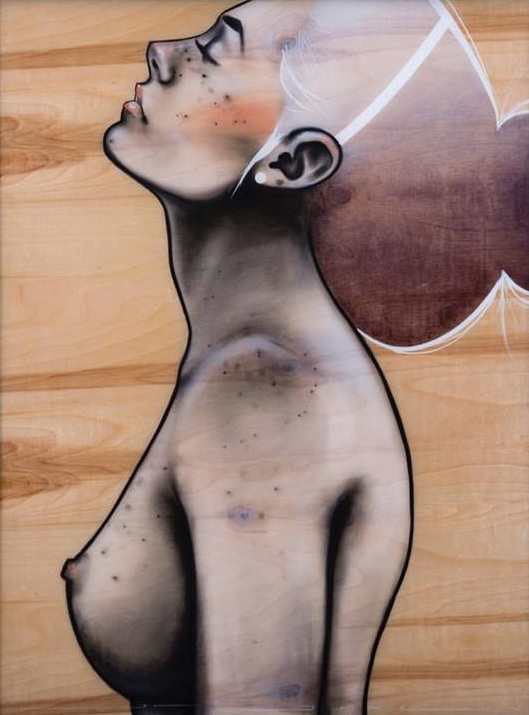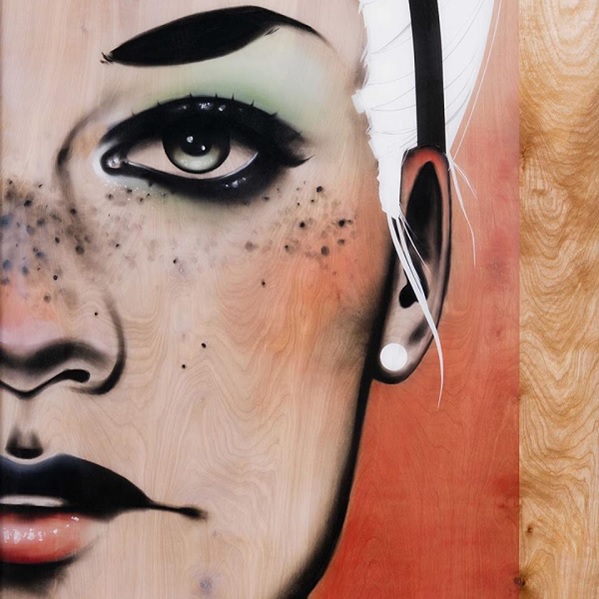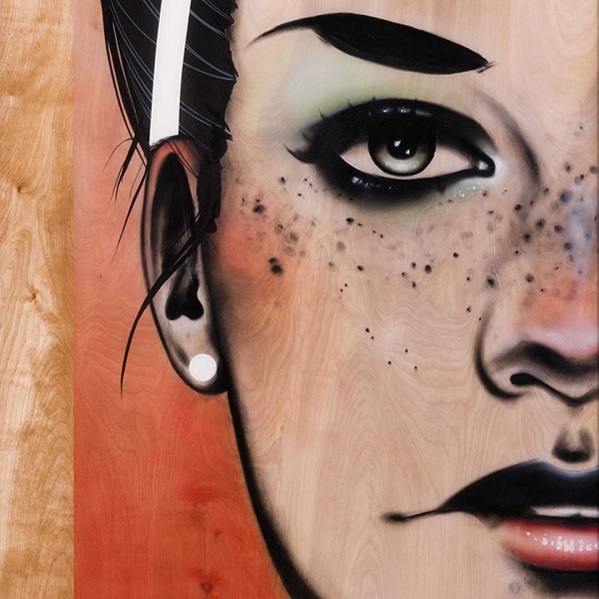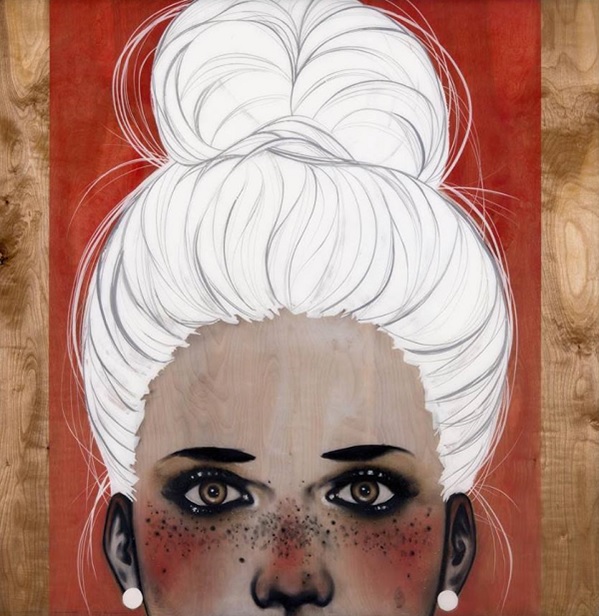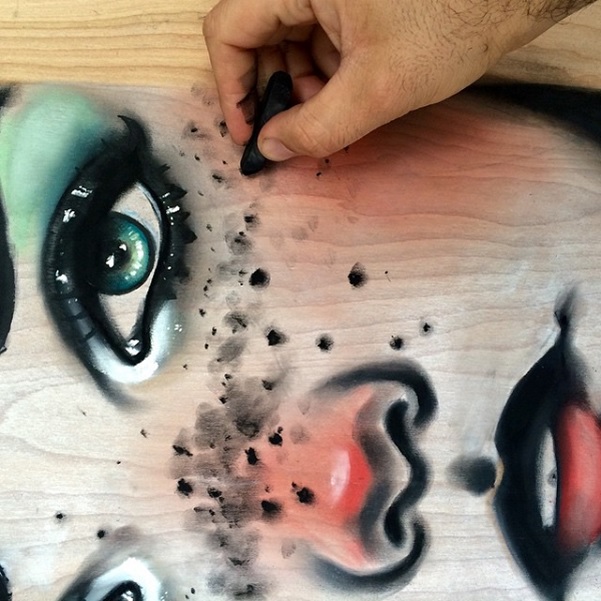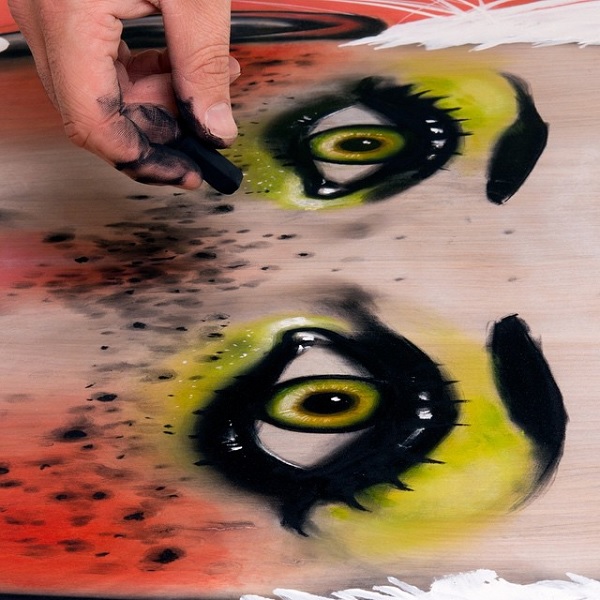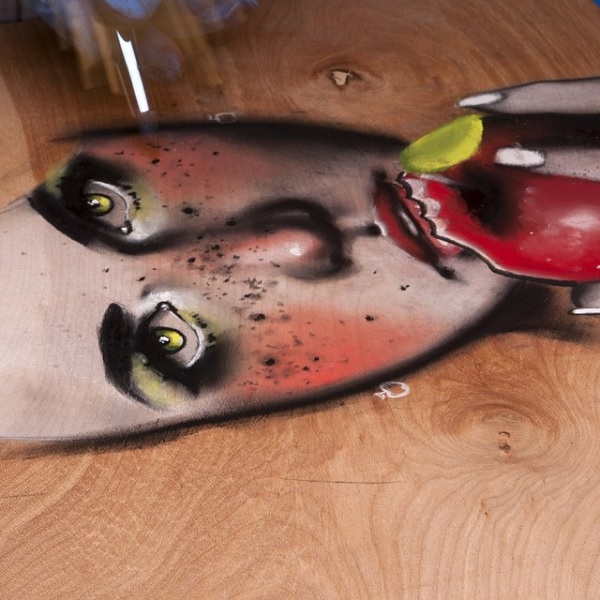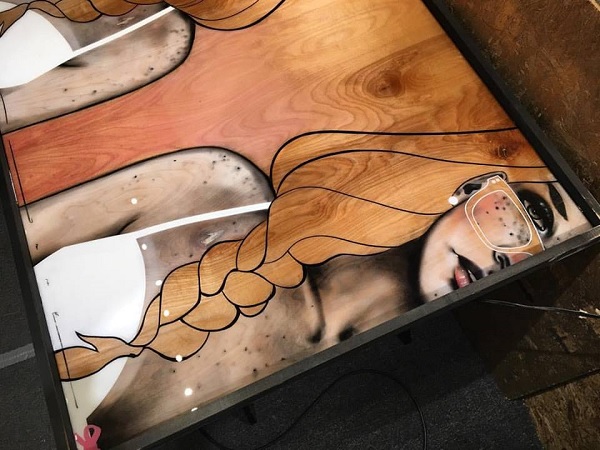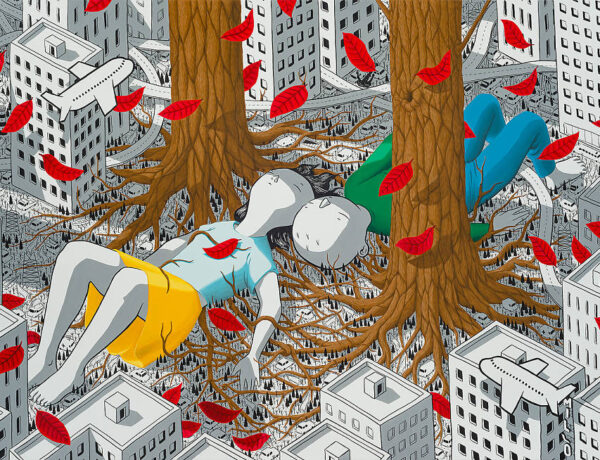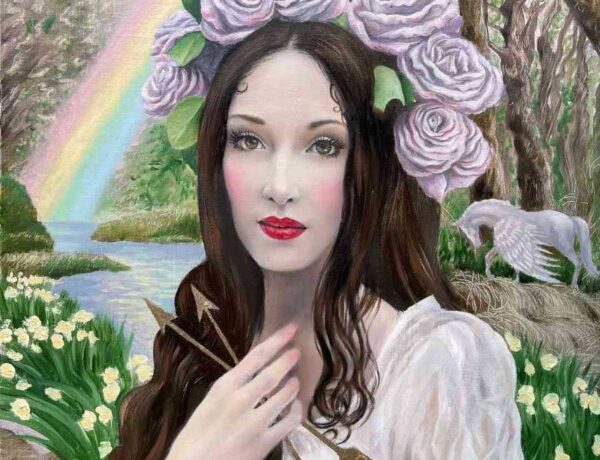David Santiago, also known by his artist persona St. Jame, creates wistful images of ethereal female figures that seem to float delicately across the surface. Their penetrating gaze draws the viewers in with sultry stares that create an atmosphere of mystery and intrigue. The viewer wants to learn more about the women, learn the secrets their pensive eyes and parted lips hold. Stepping into the world of St. Jame is like stepping into a delicate world, filled with softly blushed skin and inquisitive figures daring you to look more.
You can see David’s solo exhibition that opened December 4th at Tractor Brewing Company or visit him on Facebook.
Where does the name St. James come from, why use it?
It’s actually a play on my last name, Santiago. It means St. James and it seemed like a fun use of it. I interchange between the two but my social media platform is through the St. James name.
What was your first memory of wanting to become an artist? When did you know this was what you wanted to pursue?
I have always been involved with drawing. I stopped drawing for a while. I used to draw all the time, we’d go out to eat and I’d draw on there at the table all over the coloring pages they give you. I studied architecture at UNM and there my passion really started to stick. I started to post my images on Facebook and there was a response. It was cool. That’s the hard part, getting your work out there, afraid of judgment. I was a little reserved.
I liked the feedback and I decided to post more that way, got more response. People seem like they enjoy it, so I think from there I started perusing that artist side a little more. After graduation I figured I’d try doing art for a while. My first public show was at Tractor [Tractor Brewing Company] and getting ready was super exciting and nervous. No one knew who the hell I was. It might have been after that initial feeling and response that I thought this is neat.
Where do you get your inspiration?
I’ve always been attracted to the body in physical and art form. I like looking at sculpture and see how they body is positioned and the full figure or painters faces. The subtleties in lips and little details that draw different emotions. You interact with people on a daily bases and to find a way to reproduce that in art is challenging, or to make a message with it at the same time. That is my initial inspiration to do portraiture. With women in particular, no matter growing up I would draw faces. I think it’s a subconscious thing, everything I drew would come out feminine and I think I just stuck with it. That’s what worked.
What is your process like (when creating a concept or series) from start to finish? How do you come up with your figures and bring them to life?
Depending on the idea, I’ll sketch a lot and keep playing with ideas till I find something I like. I’ll modify things. If I’m stuck I’ll do a photo shoot and try to spark an idea, it helps creating the final piece. From there I’ll sketch and scan into my computer and play with colors. I’ll get my wood, cut it to the size I like and prep it. When I start the initial transfer I’ll see something differently. I’ve cut things in half because it evolved. It’s always evolving, from the beginning to the middle to the end. It’s the natural evolution of the painting. I’ll have pieces that sit around for a year or so and it’s not quite there and one day I have an idea because I looked at it differently.
How did you come to use pastels on wood and even blush (such as NARS or URBAN DECAY)? It’s a unique process I haven’t seen before.
I used charcoal and pastel as my mediums. I was at Walgreens and walking down the makeup aisle and I thought, “That might be cool. Could I use that color and would it show up?” I took it and thought why not. It worked well on paper but I hadn’t used it in a final piece yet. A friend and I were at the mall and he knew someone at Sephora and brought it up. I thought I’d try some from there. The quality was amazing. I figured it just added. It was interesting to me using makeup for its intended purpose but not really, but then really. It added character; it gave another diminution to the piece. It does the job of what makeup is supposed to do, it attracts. It’s the last part. I’ll level it out, the high gloss will finish and buff it on gently and let it land naturally then pour over it.
What is the hardest part of your creative process?
Choosing the right beverage to accompany my work, ha. The hardest part, I guess, which is hard for a lot of artist, is coming up with new ideas and not getting locked into one thing. I think as long as you continue to produce and create you will lead to new ideas. It’s hard to not get stuck and you get comfortable in style. You have to stay open. Sometimes you just have to not think too much and let it take its course. It’ll take you to the next step where you need to go. What am I going to make next, I just don’t think about it.
Having worked with Tractor Brewing Company on several projects before, how has that impacted your career?
It definitely affected my career [with tractor], I had my first show with them. The whole process with me was new. I had to design a product. I was approached to work with their beer cans and they gave me free will over the project. They said here’s what we need it was interesting designing something. It’s surreal to see it into shelves and that you can look it as art and then smash it, recycle it and there it is on shelves again. It doesn’t seem complete to me yet. They’ve promoted me and get my name out there so much, having me at their events, hosting shows of my work. It just all came together and I couldn’t think of a better way to start.
What’s the one piece of advice that you were given that benefited you the most?
We did an emerging artist show. They had speakers. Going into it you don’t understand how much of a business it is. I think if you really want to support yourself you have to treat it and respect it in that way as well. You have to know when to limit yourself. B.C. Nowlin spoke there, he liked to break it down into a 2/3 deal. Spending 2/3 time in studio, if it’s the other way around you’re not doing it right. For me, it helps keep you grounded because you kind of get locked into wanting to do it and you forget to do anything else. I’m not becoming an artist; I’m becoming a business person. That was good advice for me, balancing myself.
What advice would give your past self just starting to pursue a career in art? Or other young artist just starting off?
Don’t wear cargo shorts. Stop wearing Hawaiian shirts. I would tell myself so many things. Maybe that art world isn’t as scary as we believe it is. People just like to be accepted and always be positive. They don’t make judgments. Being judged is scary. Just go for it, don’t care what people think. I like to tell myself, take what people tell you and listen to them and absorb it but at some point you have to do what you need to do… what you want to do. Don’t listen to little things. Just do you, boo, ha. It’s good to be critiqued but when you absorb it all you aren’t being honest to yourself. Create what you want to create.
What are you working on now and what projects do you have planned for the future?
My next show is solo in December for tractor. That’s what I’m currently working on, and getting resituated. Summer to now is crazy. Winter is my down time. Now getting resituated, rebrand myself a little bit. Working on my social media feed, get it fresh. This year I spent it trying to refine my work, built up my inventory.


